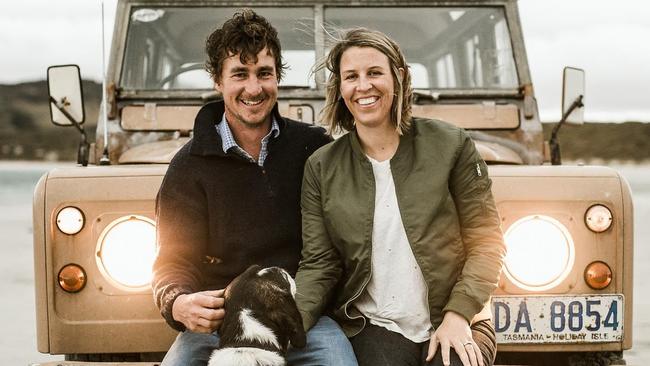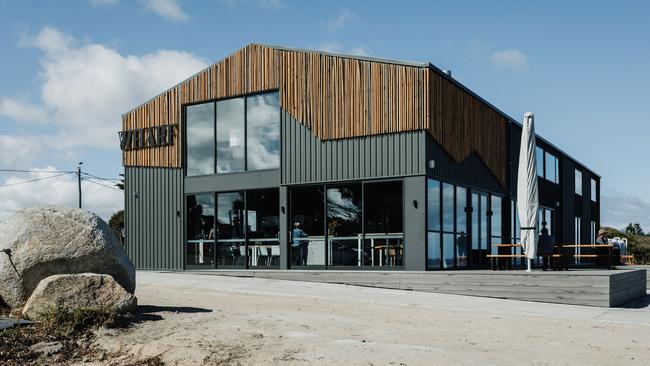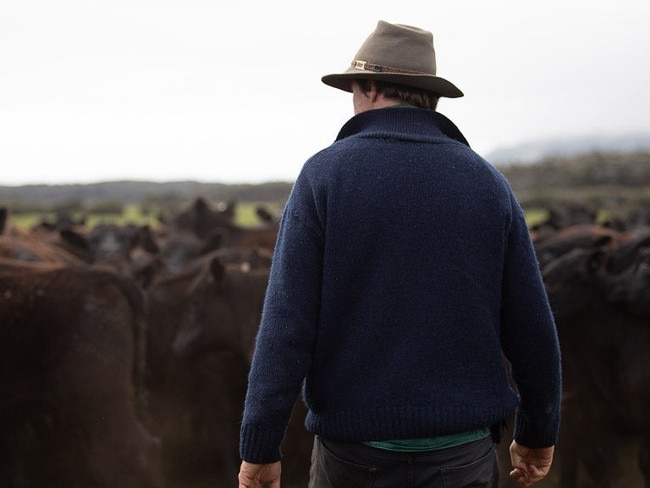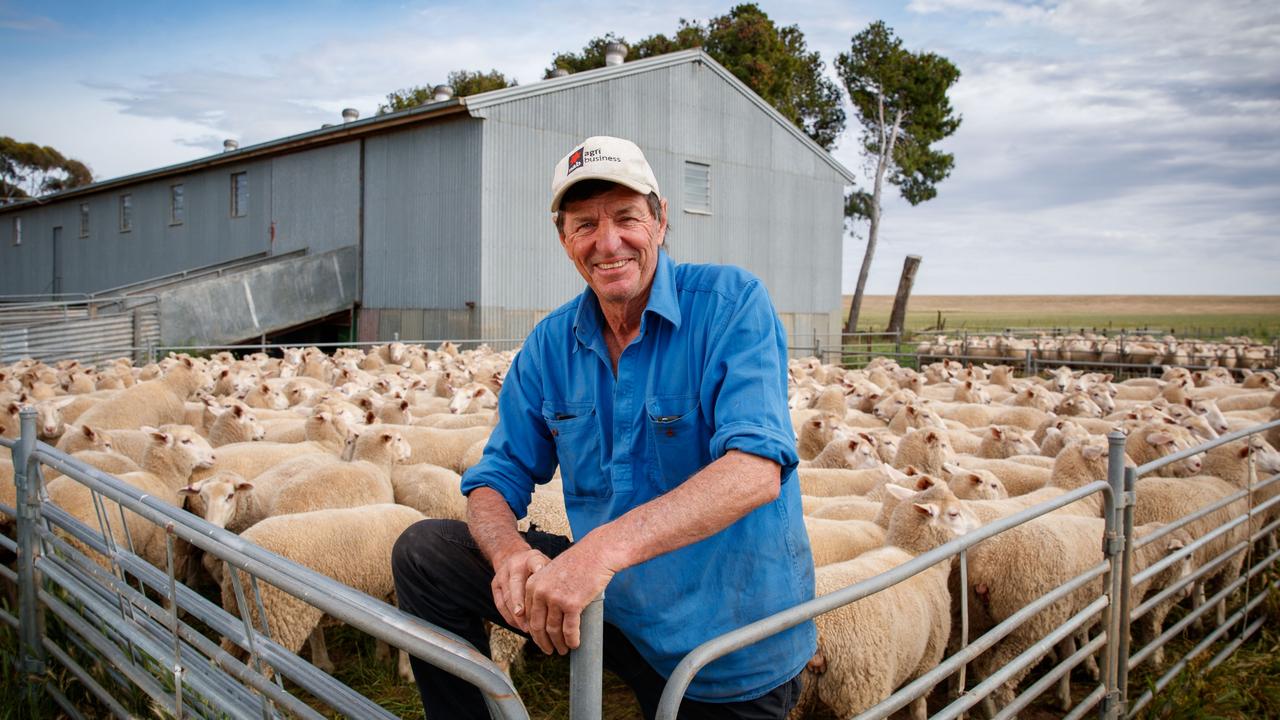Flinders Island living showcases best of region
This farming couple make the most from their Flinders Island home.

THE old adage that you only get out what you put in could perfectly be applied to Jo and Tom Youl’s 1300ha farm on Flinders Island.
Since starting the cattle property four years ago, currently expanding their 700-head Angus herd, the couple have invested heavily in not only their land, but the whole island.
In April Jo opened a new $1.5 million development, Flinders Wharf, a high-end restaurant to showcase local produce, including their own beef, (just a month after Jo gave birth to their third child).
They are set to plant 1000 avocado trees, also aiming to produce for the restaurant.
And having bought the farm as a “wallaby run”, Tom has been restoring the once largely degraded landscape, erecting a 20km long, 90cm high wallaby-proof hot wire fence (commercial cost $15,000/km). In addition he has been disc harrowing to flatten the farm, which is pockmarked by wombat holes that in some parts are 2m deep, then renovating 100ha of pasture annually.
“Farming is a long-term plan. It doesn’t happen overnight,” Tom said.
“It’s been four years and a hard slog, and it’s not paying for itself yet. But we have three kids and we want them to find employment on this island.
“We want people to come to here, to visit and stay, so for us it’s about the long-term, the big picture, not just one family and one business.”

BUSINESS APPROACH
WHILE Jo grew up on a 2000ha prime lamb and cropping farm north of Melbourne, she studied agrimarketing at Marcus Oldham and bought this savviness to Flinders Island, taking over the farm that had been in her family since the 1930s.
When the couple first arrived about seven years ago, Jo volunteered for two years to create a Flinders Island brand marketing strategy.
“There was so much beautiful produce being grown here, but I was astounded there was no access to it,” said the 35-year-old.
So she successfully created The Flinders Wharf concept, with a 30-year lease, building a new shed on TasPorts land.
Thanks to a $614,000 Federal Government regional jobs grant, the wharf showcases Flinders Island lamb (Markarna Park), crayfish, vegetable farms and even locally caught mutton birds (Ocean Omega), as well as their own beef.
“It (Flinders Wharf) seems separate to the farm now, but it will come together,” Jo said.
“Flinders Island is so small no one would remember one business, so this is about the big picture, marketing the whole island.
“We want to use our own beef, and we’ll also add agritourism with accommodation on the farm.”
Tom grew up on a Merino sheep and Angus cattle property in Tasmania’s Midlands, studied horticulture at Burnley in Melbourne and became a landscape gardener before moving to Flinders Island where he initially worked as a builder.
He started the Youl’s beef herd after buying 100 of his parents’ Angus herd and has since grown the herd as the property has improved, eventually aiming for about 1400 head or 700 breeders in the next five years.
He has introduced Angus genetics from Rosedale Rural and Cluden Newry, aiming for a sound, medium-framed animal, joined in November.
SWIFT SHIFT
STEERS are grown out to 400kg and shipped to Powranna feedlot in Tasmania — subsidised by the Tasmanian Freight Equalisation Scheme — for three months, before going to JBS Australia in Longford, then exported largely to Japan.
Cows and heifers are grown out to 550 or 700kg, respectively, or with 5mm of fat, and about 100 are sent to Greenham Tasmania annually and branded as Cape Grim meat.
The Youls’ herd is part of Greenham’s Never Ever program, which certifies and promotes grass-fed, MSA beef that has no hormones or antibiotics.
It is this beef that is sent to Flinders Wharf to showcase the farm.
However, Tom said because they did not slaughter to the demands of wharf chefs, instead shipping when cattle reached condition, not all beef in the restaurant was their own.
The 35-year-old said they have had to invest in the land heavily, in order to ensure a productive yield in the future.
Having finished building the wallaby-proof fence at Christmas, Tom renovates 100ha annually, burning scrub, fertilising, disc harrowing and fertilising, before sowing pastures of ryegrass and clovers, with small amounts of phalaris.
He said a remaining 200ha would be renovated before much of the farm could be at maximum production; (the property measures 1300ha, but about 400ha of that is beach frontage and blue gum areas that can’t be farmed).

MIX MASTER
SOILS are a mix of clay to sand and annual average rainfall is 650mm, with their farm considered to be on the drier, northern section of the island.
Highly productive areas of renovated land can support 20 DSE/ha, with unproductive parts supporting only 2 DSE/ha.
Tom works with Macquarie Franklin’s pasture program, with the herd grazed on an average 60-day rotation, when ryegrass gets to the three-leaf stage.
He is also part of the Holmes Sackett benchmarking group in Wagga Wagga.
“We are open with our figures but we are still developing,” he said. “We’ve already doubled the value of the land — we bought it for $500/acre and it’s now worth about $2000/acre, but the aim is to get to a starting point of 500kg of beef per hectare.”
The couple said farming on Flinders Island carried its own unique parameters.
“People come to this property and say ‘wow’, they’ve not seen a farm so beautiful before, the undulation, the views.”


